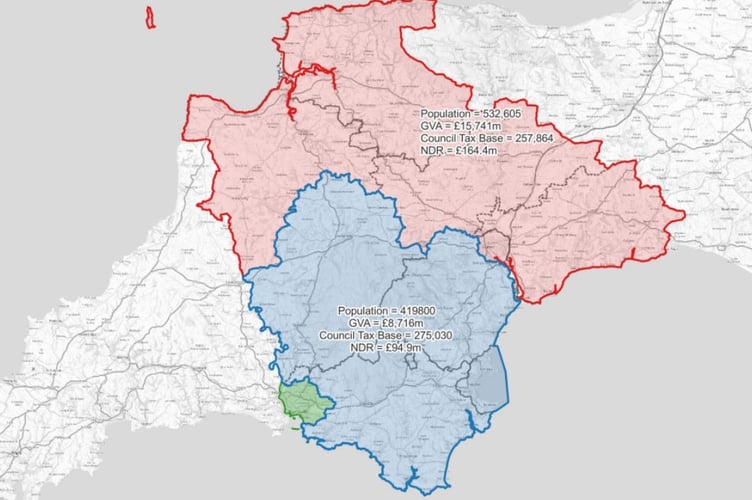EXETER has been urged to “be brave” and go ahead with bold plans to absorb 49 Devon communities, including Crediton, in the massive nationwide local government shake-up.
Members of the city council were almost unanimous – just one councillor abstained – in backing a proposal for Exeter to become a stand-alone unitary council, expanding its borders in the process.
Councillors heard that the 49 parishes, comprising 28 in East Devon, 15 in Teignbridge and six in Mid Devon (Cheriton Bishop, Hittisleigh, Colebrooke, Crediton Town, Crediton Hamlets and Newton St Cyres), naturally look to Exeter for work and leisure.
The city council’s strategy would boost its population to more than 250,000, fitting the government’s criteria for one of its new unitary authorities, but other councils around Devon continue to come up with other plans.
The existing district authorities all favour a “one-five-four” model in which Plymouth stands alone and the rest split to create two larger councils.

Under that option, the five-council section would include Exeter, East Devon, Mid Devon, Torridge and North Devon. The four-council section would be Torbay, Teignbridge, South Hams and West Devon.
But Torbay has said it wants to go it alone, and one Torbay councillor described Exeter’s recent decision to pursue a unitary future as “a huge rock thrown into the pool”.
If Exeter’s proposal for it and Plymouth to be two unitary councils with the rest of Devon forming another, Torbay would be part of a giant coast-to-coast council stretching from the southernmost tip of the South Hams to the most northerly part of North Devon, and taking in the Somerset, Dorset and Cornwall boundaries.
A report to the city council said Exeter’s strategy reflects its position as a major urban hub with strengths in housing growth, knowledge economy, innovation, education, climate science and transport connectivity.
Cllr Michael Mitchell (Lib Dem, Duryard and St James) said: “This is the start of a journey, but the destination is still unclear.”
He also echoed calls for strong town and parish councils under the new unitaries to make sure local issues were at the top of the agenda.
Cllr Laura Wright (Lab, St Thomas) went on: “This isn’t about Exeter swallowing up the surrounding areas.
“These are areas which already have a strong local connection. It makes so much sense.”
Cllr Ruth Williams (Lab, Mincinglake and Whipton) said some of the other options favoured by other councils were a “back-of-a-fag-packet effort”.
“How can they think that clumping five districts and four districts together is going to work for those residents?” she asked.
A period of six weeks of intense public engagement starts now. All councils have been asked to consider their options before a deadline of November 28, when their preference must be submitted to the government.
Ministers will then make a final decision, and the new councils will take control in May 2028.
Elections to the new councils will be held in May 2027, with councillors acting in a “shadow” role leading up to the final switch a year later.

.jpeg?width=209&height=140&crop=209:145,smart&quality=75)



Comments
This article has no comments yet. Be the first to leave a comment.